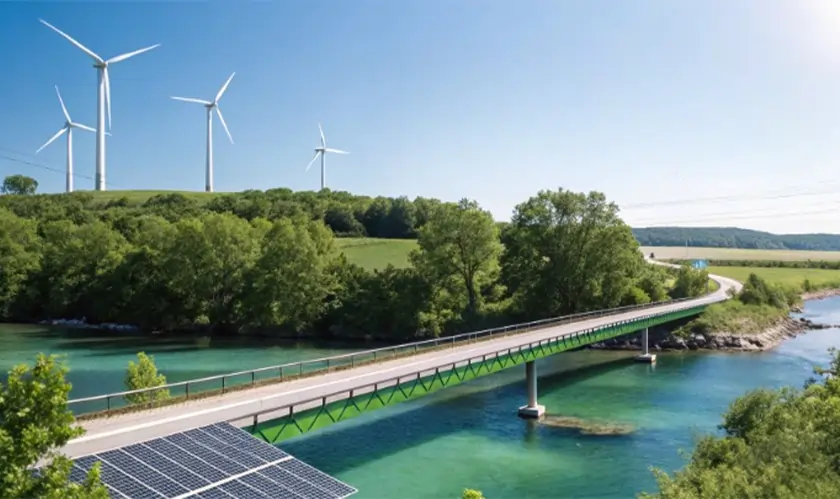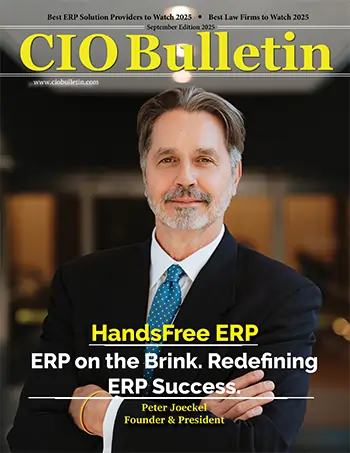Home Industry Environmental sustainability Santunu Barua’s Legacy of En...
Environmental Sustainability

CIO Bulletin
06 January, 2024
-Julian Riley
A manufacturing plant without roads is inaccessible. A city without clean water is unlivable. Industries cannot function without stable infrastructure, and urban expansion collapses without environmental planning.
Behind every blueprint is an engineer who ensures that progress does not come at the cost of sustainability. Santunu Barua has dedicated his career to making infrastructure work smarter.
From industrial zones in Bangladesh to environmental sustainability and compliance in the United States, his expertise has driven large-scale projects that extend beyond construction. His work influences industries, impacts regulations, and ensures that growth does not mean destruction.
A structure is only as strong as its foundation. Santunu’s foundation in engineering began at Chittagong University of Engineering & Technology, where he earned his degree in Civil Engineering. His early experience at Sarker Steel Ltd. introduced him to pre-fabricated steel structures, giving him a firsthand look at project execution and logistical challenges. But designing buildings was not enough—he wanted to shape entire industrial landscapes.
At Bangladesh Small and Cottage Industries Corporation (BSCIC), he stepped into that role. His work went beyond blueprints and construction sites. He supervised the development of industrial zones, ensuring that factories, pump houses, and drainage systems met structural and safety standards. Each decision impacted businesses, supply chains, and entire sectors.
Regulatory oversight became a critical part of his role. Industrial expansion required careful planning to avoid inefficiencies, hazards, and environmental risks. Santunu ensured that factory layouts were not only functional but future-proof. Approving designs, managing procurement, and overseeing construction turned him into a key player in Bangladesh’s industrialization efforts.
Not all infrastructure is visible. Some of the most critical systems—those that supply clean water and manage sanitation—exist beneath the surface. At the Department of Public Health Engineering (DPHE), Santunu took on the responsibility of ensuring safe water access for millions.
A country’s development is only as strong as its public health infrastructure. Without clean water, cities fail. Industries suffer. Populations decline. Santunu oversaw the installation of tube wells, the construction of water treatment plants, and the development of pipelines that delivered life-sustaining resources to communities.
Government-funded projects came with their own set of challenges. Procurement decisions had long-term consequences. Every budget allocation had to be precise. A miscalculation in cost estimation could mean delays, shortages, or system failures. Santunu worked within these constraints, ensuring that projects were executed efficiently, vendors met quality standards, and resources were used responsibly.
The success of these initiatives did not only improve public health. They set a precedent for how large-scale water projects could be managed effectively. Santunu’s leadership in these developments demonstrated that civil engineering was not only about building structures—it was about improving lives.
Industrial expansion and public health projects come with an environmental cost. Without proper oversight, development leads to pollution, resource depletion, and long-term ecological damage.
At DICES LLC in New York, Santunu transitioned into environmental engineering, ensuring that growth and sustainability were not opposing forces.
Stormwater management became one of his primary focus areas. Industrial facilities needed systems that prevented runoff pollution, controlled flooding, and complied with environmental regulations.
Santunu worked on designing stormwater detention and treatment solutions that met the strict standards of agencies like the NYCDEP and NYSDEC.
A crucial aspect of his work also involved conducting wetland delineation in accordance with the U.S. Army Corps of Engineers Wetlands Delineation Manual, which defines wetlands based on hydrology, vegetation, and soil criteria. Santunu marked boundaries precisely to ensure compliance with federal and state regulations, preventing unauthorized land use changes.
Regulatory compliance was no longer an afterthought—it was a driving factor in project execution. Santunu prepared engineering reports, managed regulatory applications, and conducted environmental monitoring using advanced tools like the CASELLA CEL-712 Microdust Pro to track air quality.
Industrial projects could no longer operate unchecked. His work ensured that companies followed legal requirements, protected ecosystems, and implemented sustainable solutions without sacrificing operational efficiency.
His expertise bridged the gap between traditional civil engineering and modern environmental responsibility. The same principles he applied to industrial zones and water supply systems now shaped policies that determined how industries operated in environmentally sensitive regions.
Every stage of Santunu’s career came with unique obstacles. Managing large-scale industrial developments at BSCIC meant working within tight timelines and ensuring compliance with evolving safety regulations.
At DPHE, navigating bureaucratic processes while executing water infrastructure projects required strategic planning and problem-solving.
At DICES LLC, environmental laws and compliance standards were constantly shifting, requiring adaptability and a deep understanding of policy changes.
Each challenge expanded his expertise. He mastered procurement, budgeting, and regulatory frameworks. He developed strategies for balancing project efficiency with sustainability. He learned that engineering success was not only about technical knowledge but also about anticipating risks and making informed decisions that impacted industries at large.
Santunu’s expertise has been validated through certifications that highlight his commitment to industry standards. His qualifications include the New York State DEC 4-Hour Erosion and Sediment Control Training, OSHA 40-hour HAZWOPER Training, and OSHA 30-hour Construction Industry Safety Training.
Additionally, Santunu holds the Construction Manager-in-Training Certification and is an authorized Class A/B Operator for Underground Storage Tanks (UST) under the NYSDEC certification program.
His site safety certifications and environmental compliance credentials reflect his ability to oversee projects that meet strict safety and environmental criteria.
Beyond certifications, he remains an active member of professional organizations that shape the future of engineering. As an Associate Member of the American Society of Civil Engineers (ASCE), he contributes to discussions on environmental and water resource management.
His involvement with the Construction Management Association of America (CMAA) and the American Society for Engineering Education (ASEE) ensures that he stays at the forefront of industry advancements.
Santunu is not only implementing solutions—he is influencing how engineering standards evolve. His work serves as a benchmark for integrating sustainability into large-scale infrastructure projects.
Urbanization is accelerating. Industries are expanding. Environmental regulations are becoming more stringent. Engineers must find solutions that do not compromise between development and sustainability.
Santunu Barua is not only constructing physical structures—he is building a future where engineering is both impactful and responsible. His work ensures that industrial progress does not lead to environmental neglect. His contributions prove that sustainability is not a limitation but an opportunity.
True engineering success is not measured by what gets built but by what lasts. Santunu’s work will endure, not only in structures but in the standards he has set for an industry that must evolve with the world it shapes.







